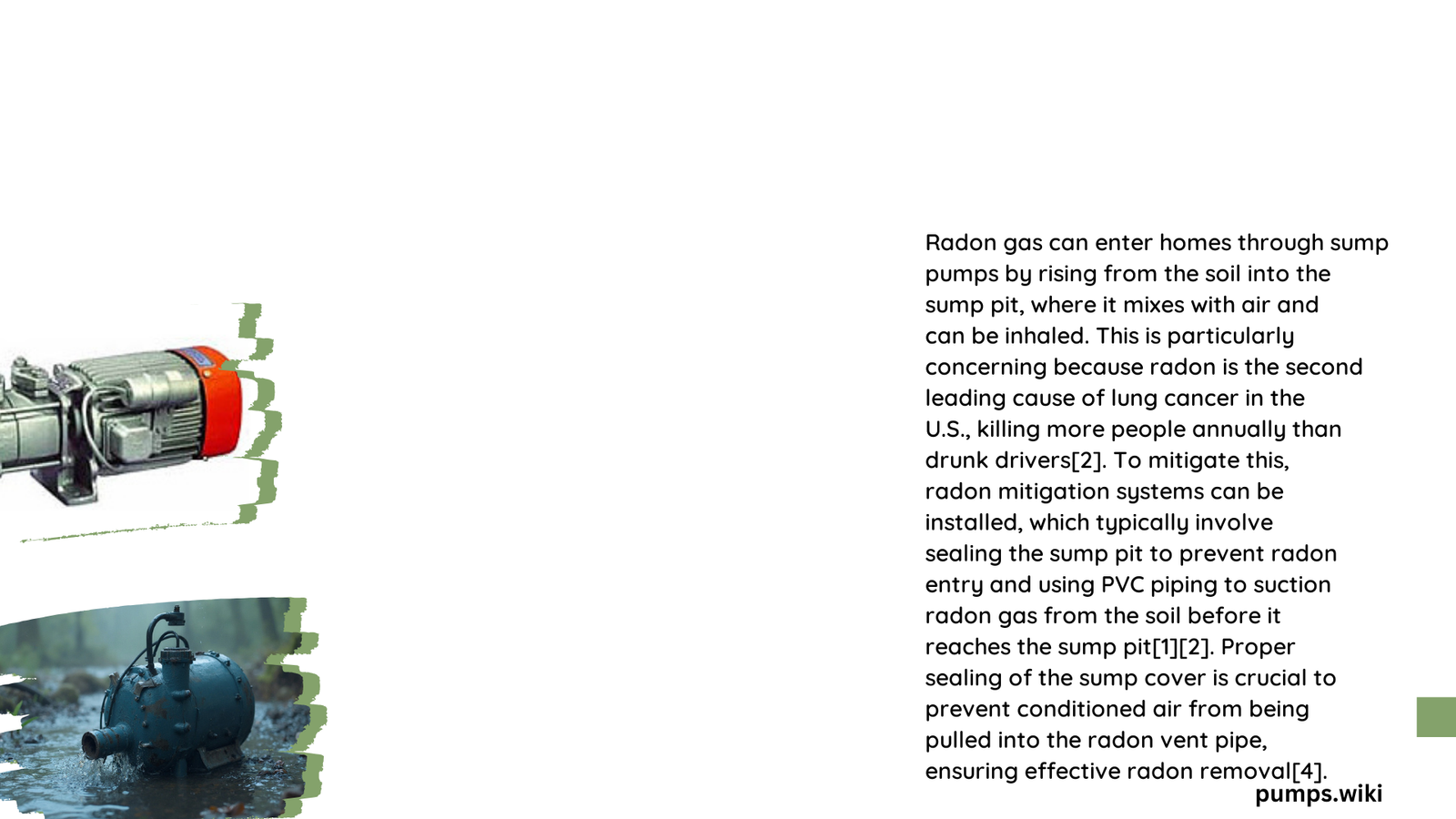Radon gas from sump pumps represents a critical yet often overlooked home environmental hazard. Homeowners face potential health risks as this invisible, odorless radioactive gas can infiltrate living spaces through basement drainage systems, particularly via unsealed or improperly maintained sump pump installations. Understanding the mechanisms of radon entry, detection strategies, and effective mitigation techniques is essential for ensuring indoor air quality and protecting residential health.
What Is Radon Gas and How Does It Connect to Sump Pumps?
Radon is a naturally occurring radioactive gas produced by uranium decay in soil, rock, and water. In residential settings, sump pumps can serve as potential entry points for this dangerous substance. The connection between radon gas and sump pumps is complex and multifaceted:
Key Characteristics of Radon Gas
- Origin: Uranium decomposition in underground geological formations
- Physical Properties: Colorless, odorless, tasteless
- Measurement Unit: Pico-Curies per liter (pCi/L)
| Radon Level | Health Risk Category |
|---|---|
| 0-2 pCi/L | Low Risk |
| 2-4 pCi/L | Moderate Risk |
| 4+ pCi/L | High Risk |
How Do Sump Pumps Facilitate Radon Entry?

Sump pumps create potential pathways for radon gas infiltration through:
– Unsealed sump pit openings
– Cracks in basement foundations
– Gaps around pipe penetrations
– Soil gas migration channels
Factors Influencing Radon Transmission
- Soil uranium concentration
- Foundation structural integrity
- Basement moisture levels
- Atmospheric pressure differences
What Detection Methods Exist for Radon Gas?
Professional radon detection involves multiple sophisticated techniques:
Active Measurement Technologies
- Continuous Radon Monitors (CRMs)
- Real-time electronic measurements
- Provide hourly radon concentration data
-
Accuracy within ±5% of actual levels
-
Passive Detection Devices
- Charcoal canister tests
- Alpha track detectors
- Electret ion chambers
How Can Homeowners Mitigate Radon Risks?
Effective radon gas mitigation strategies include:
Structural Interventions
- Seal sump pump pit completely
- Install specialized radon-blocking covers
- Apply hydraulic cement to foundation cracks
- Implement sub-slab depressurization systems
Advanced Mitigation Techniques
- Active soil depressurization
- Sump-hole suction methods
- Comprehensive basement sealing
- Professional radon mitigation system installation
What Are Recommended Radon Reduction Targets?
The Environmental Protection Agency (EPA) recommends:
– Maintain radon levels below 4.0 pCi/L
– Implement mitigation when levels exceed recommended thresholds
– Conduct periodic professional testing
Cost and Implementation Considerations
| Mitigation Method | Average Cost | Effectiveness |
|---|---|---|
| Basic Sealing | $500-$1,500 | 30-50% |
| Professional System | $1,500-$3,000 | 80-99% |
Conclusion
Understanding radon gas from sump pumps requires a comprehensive approach combining scientific knowledge, professional assessment, and proactive home maintenance strategies.
